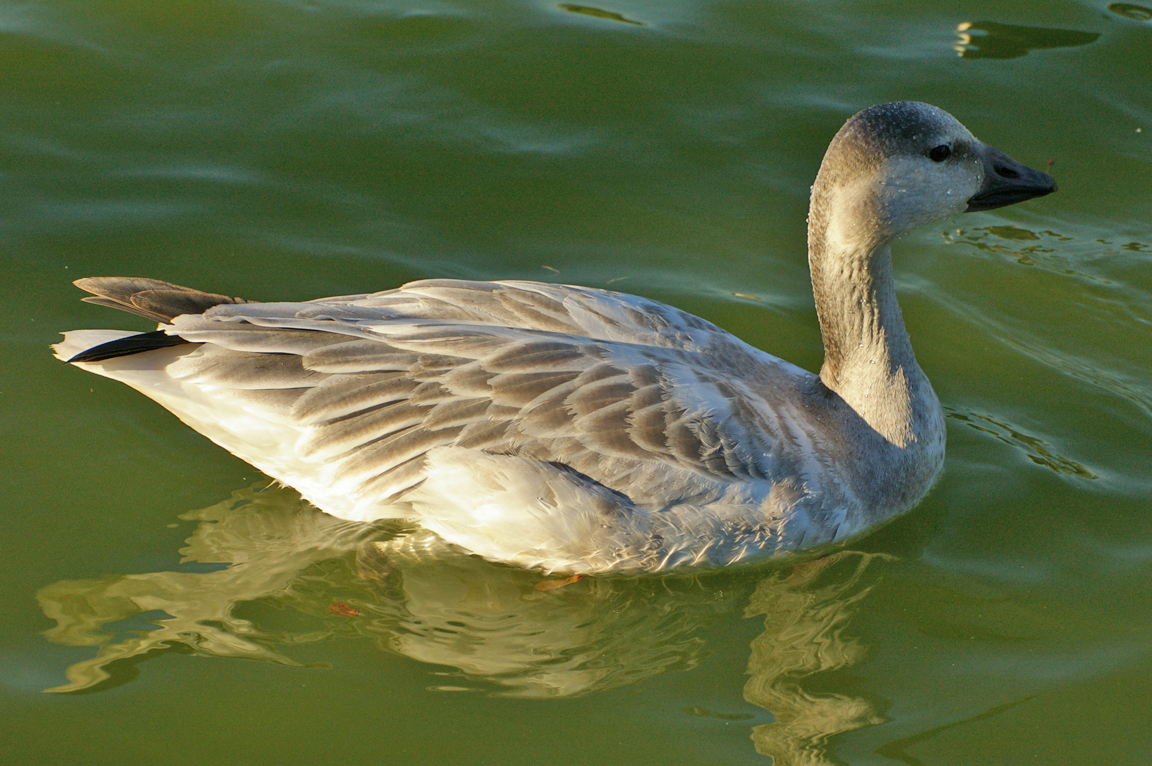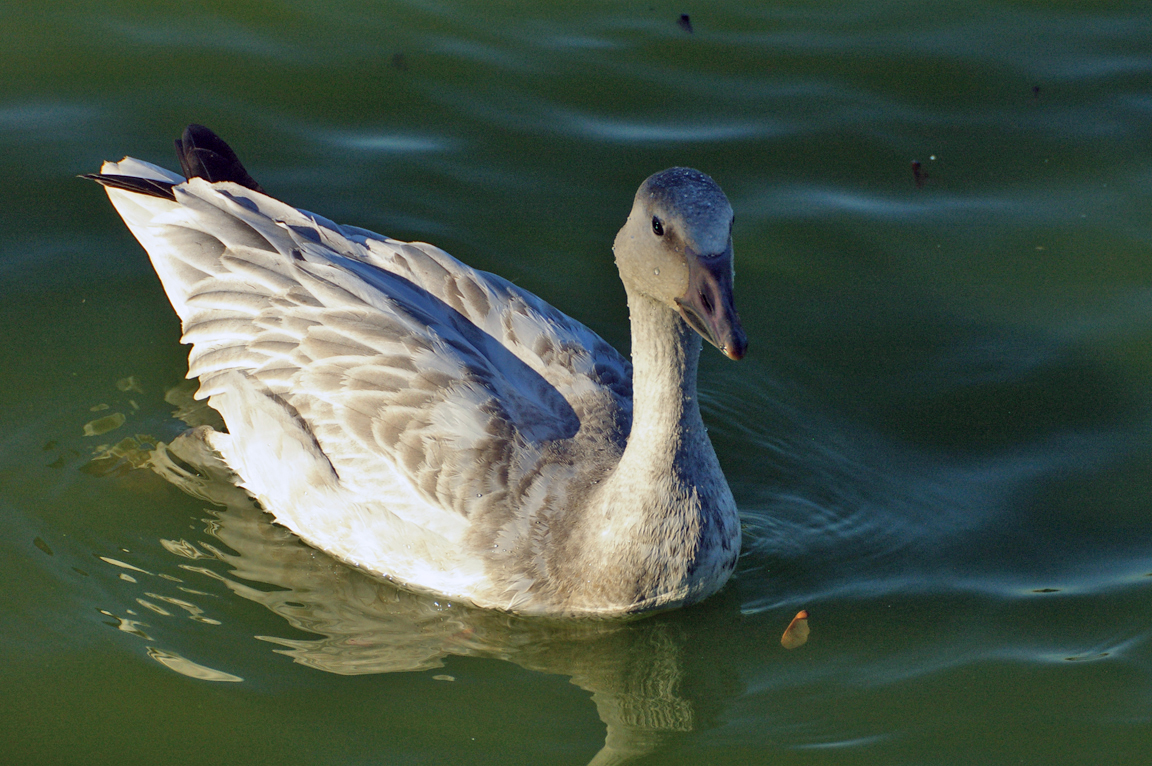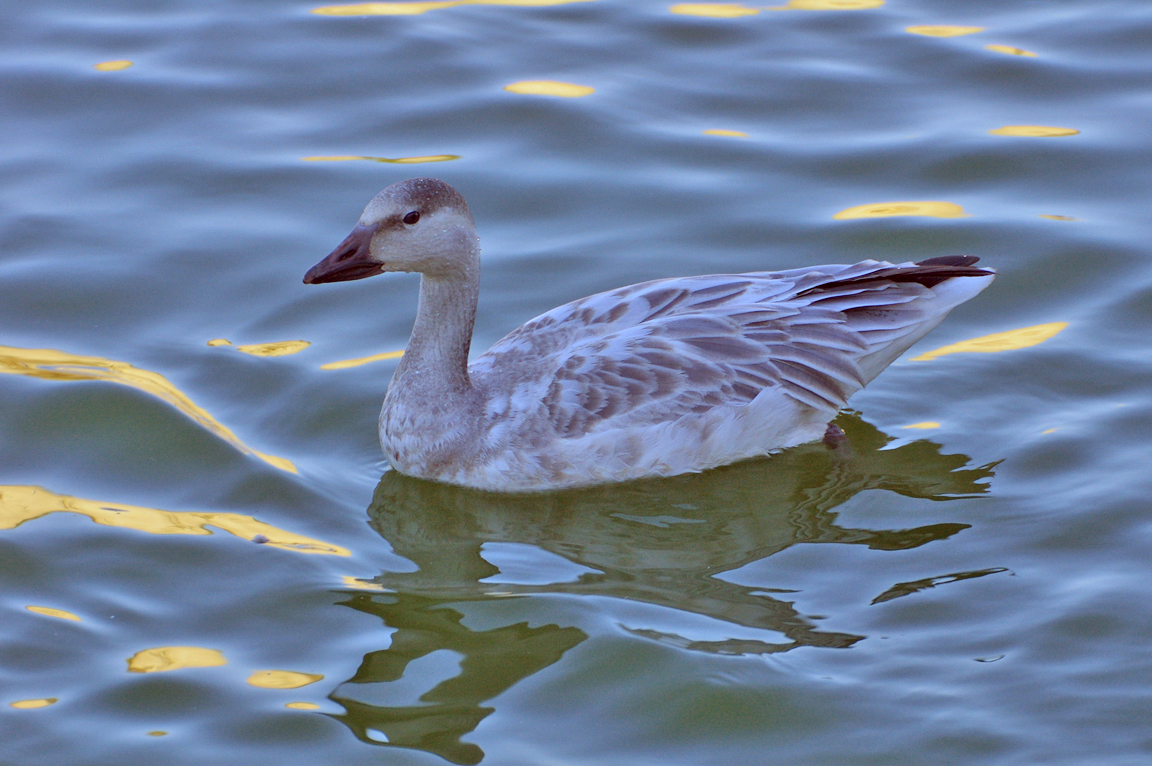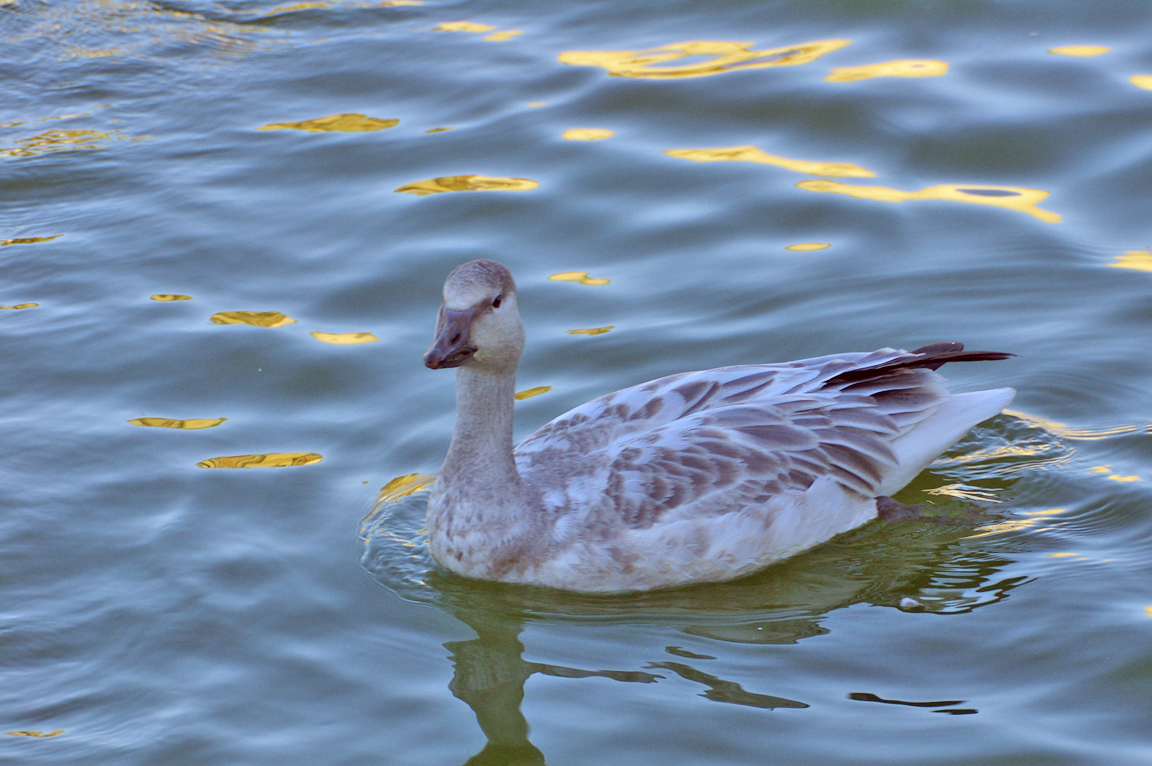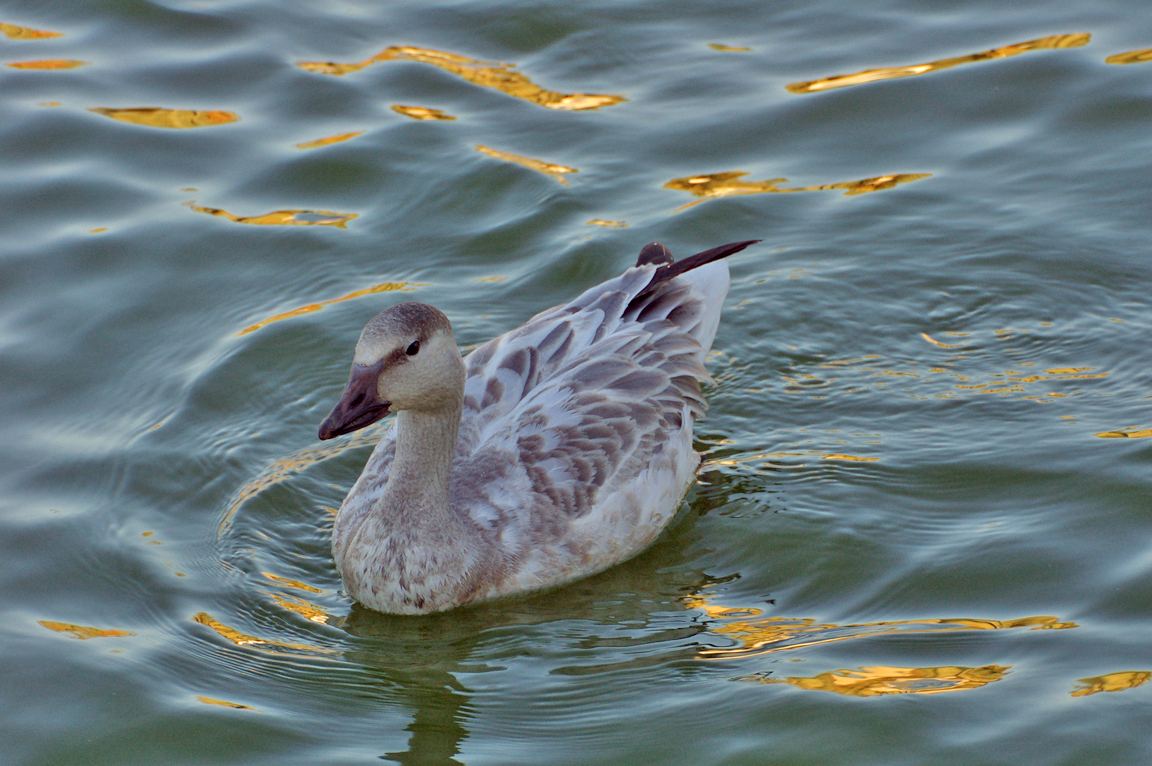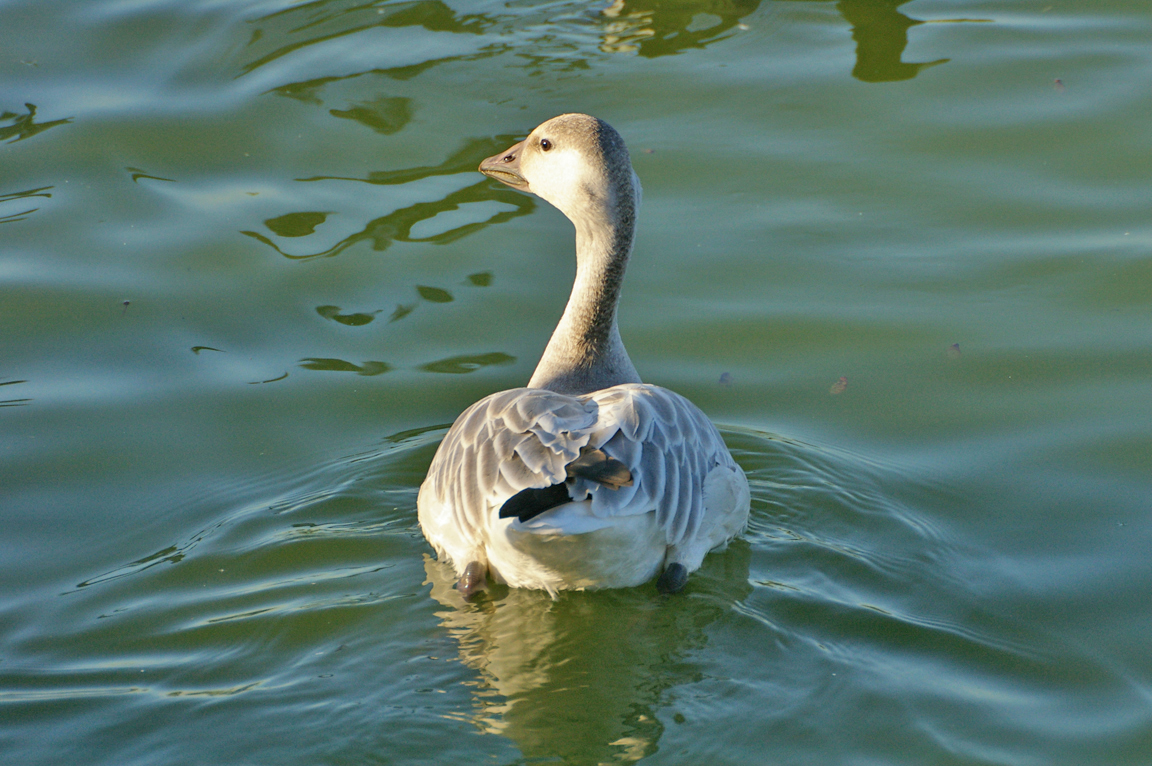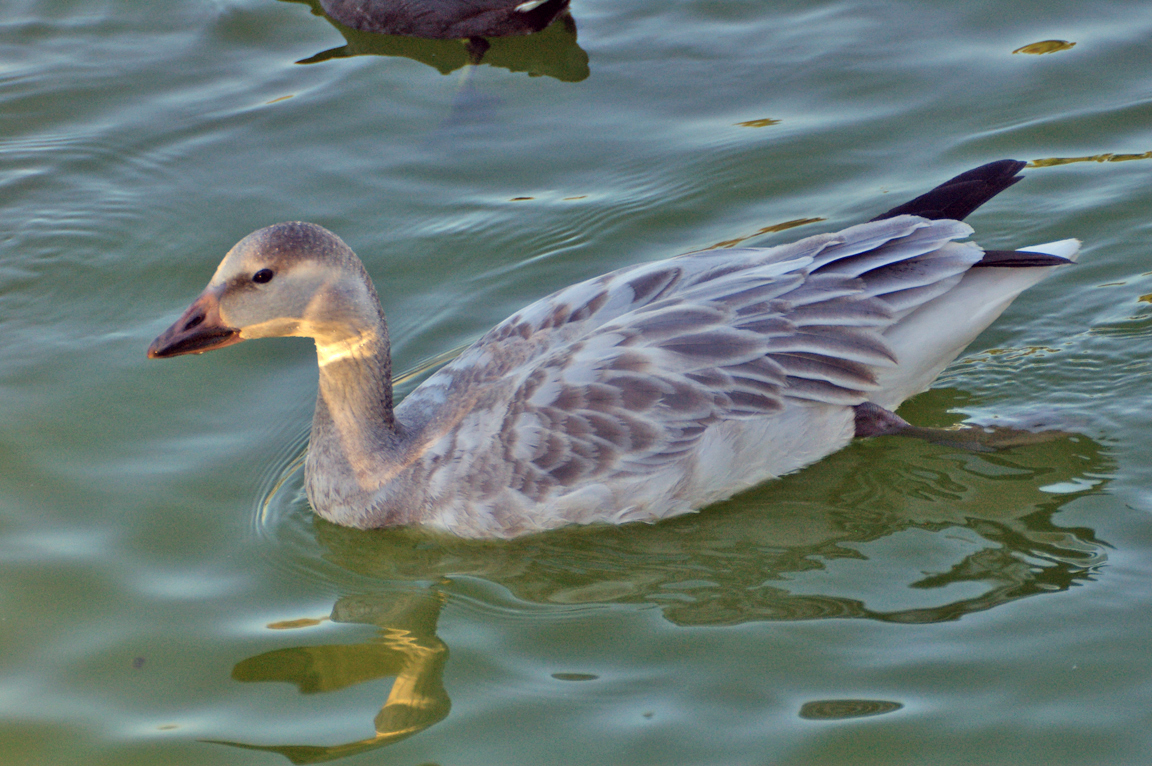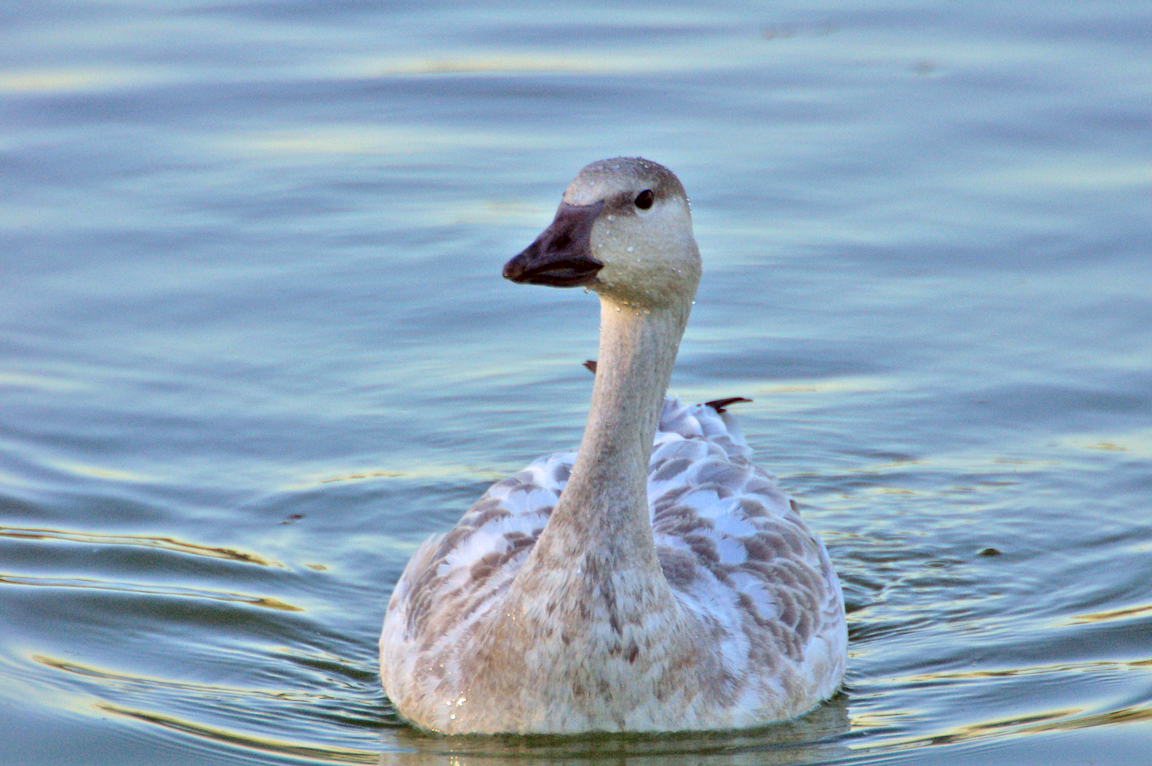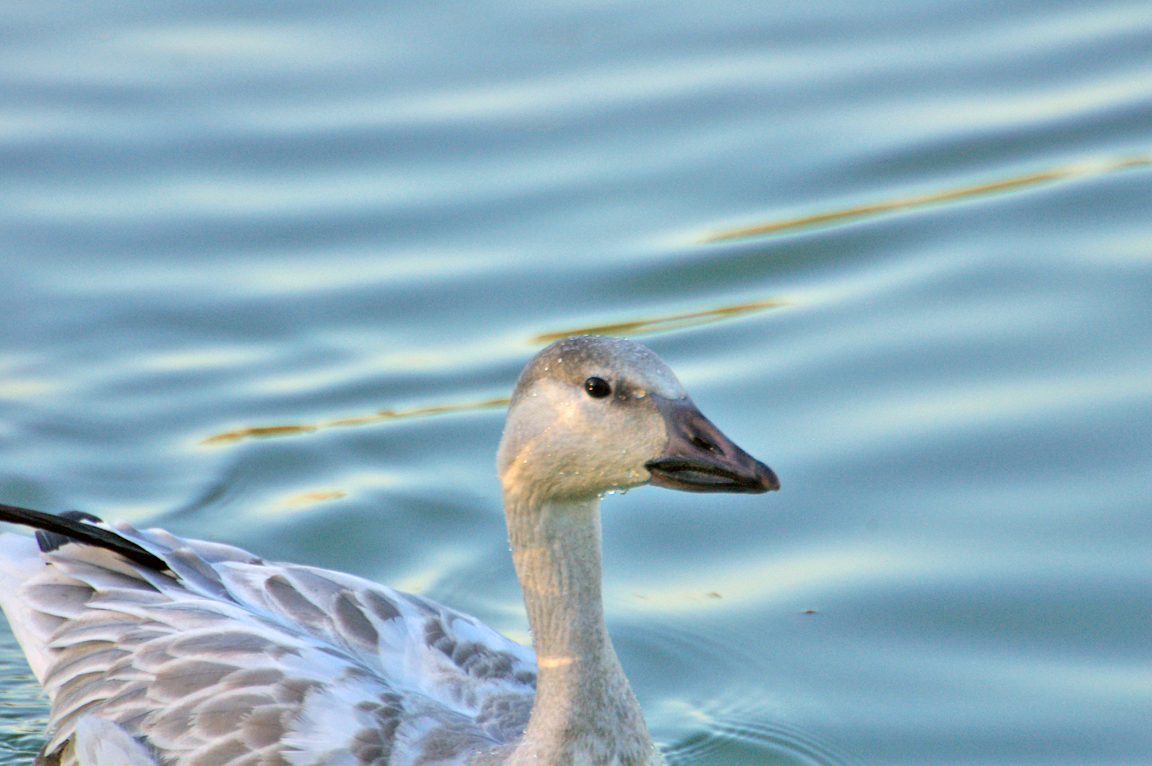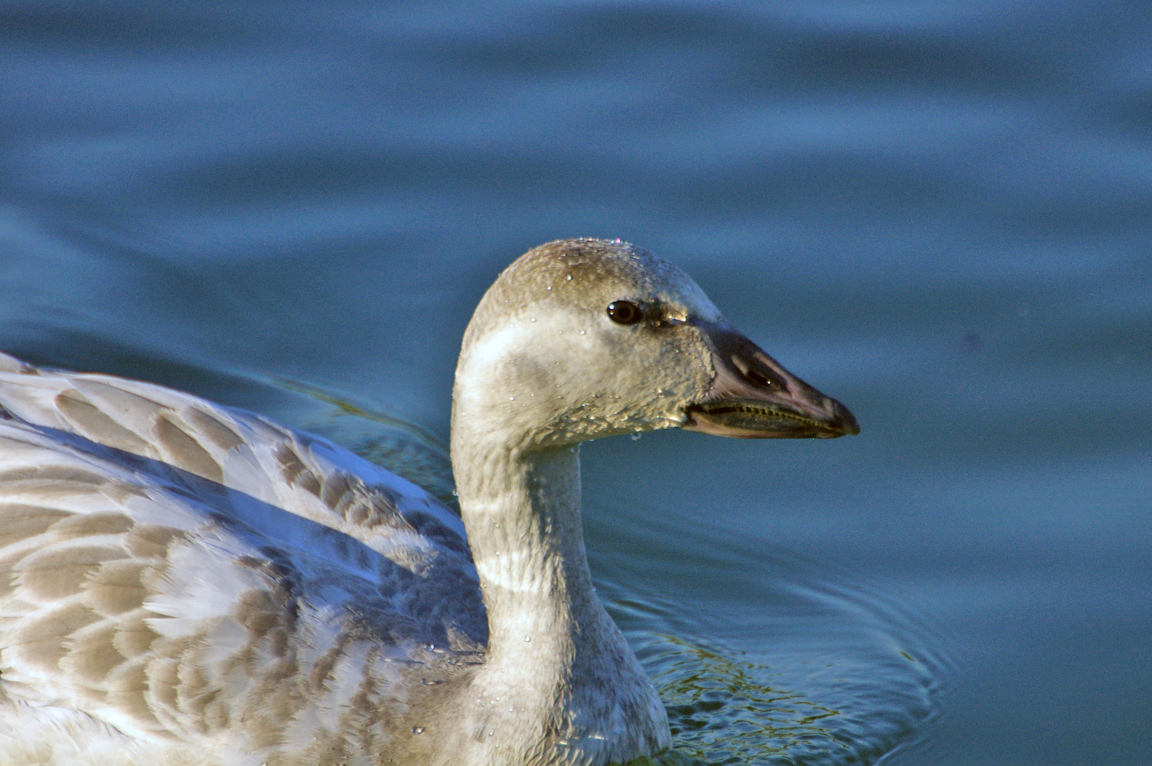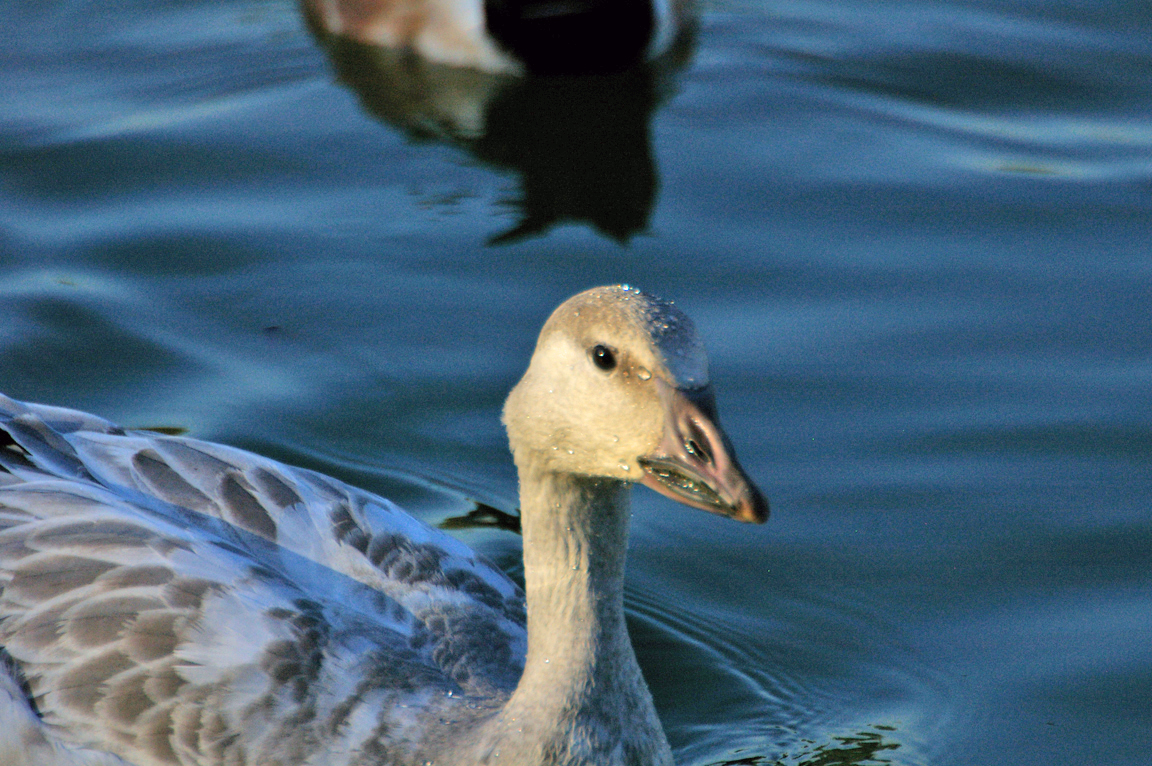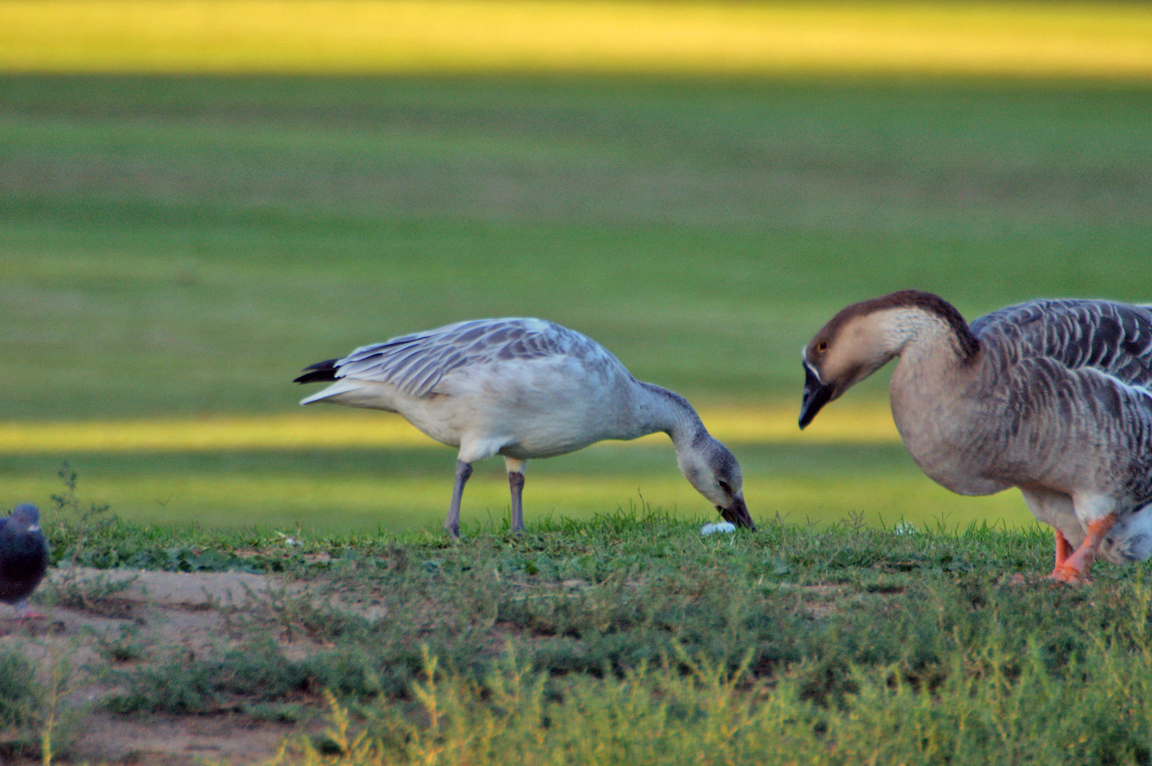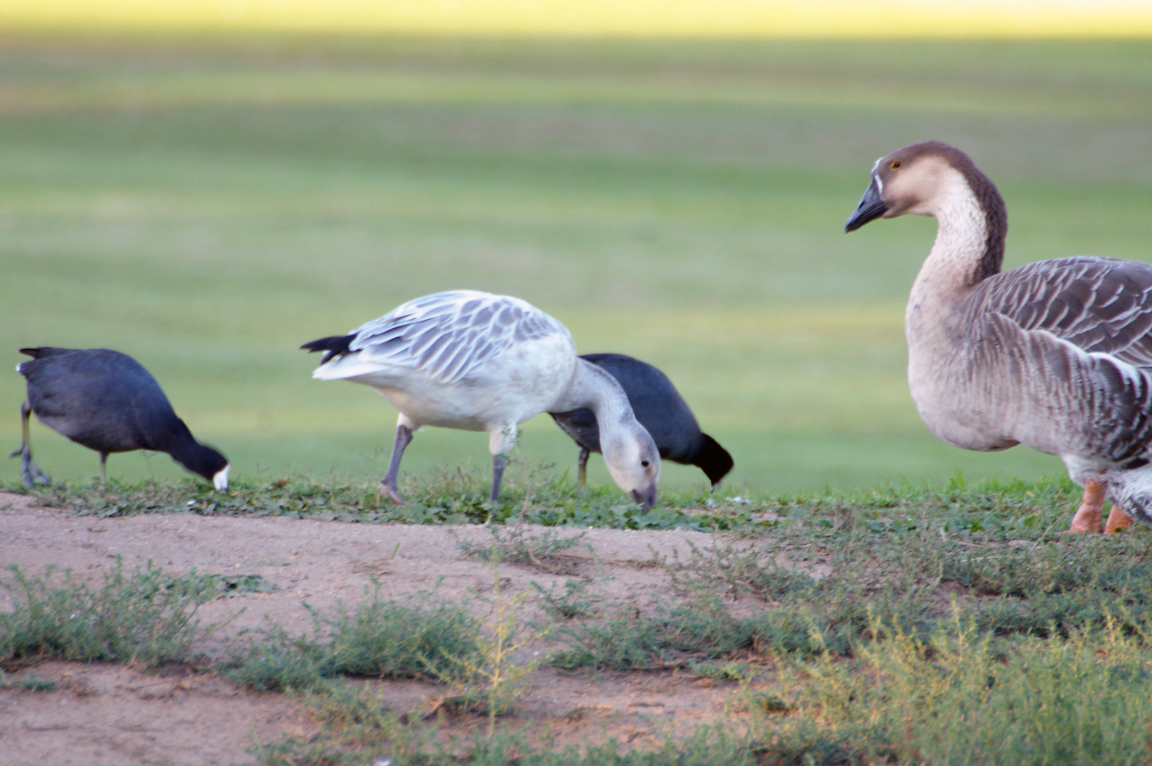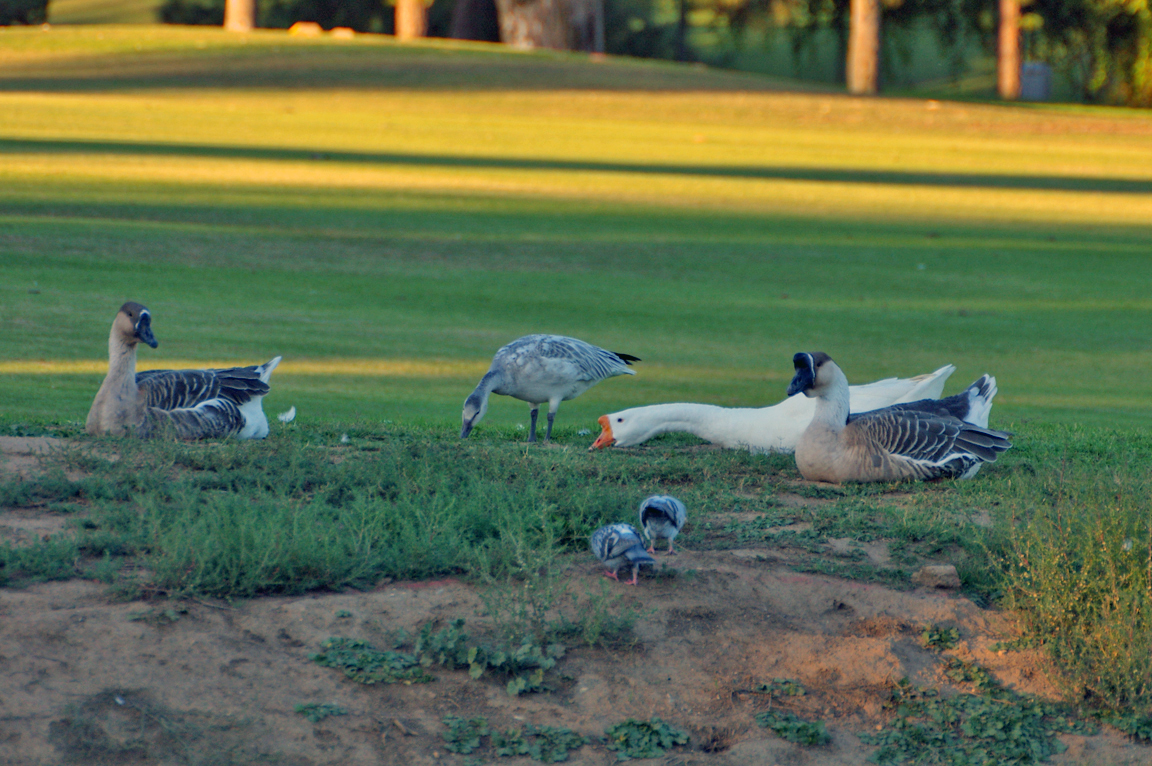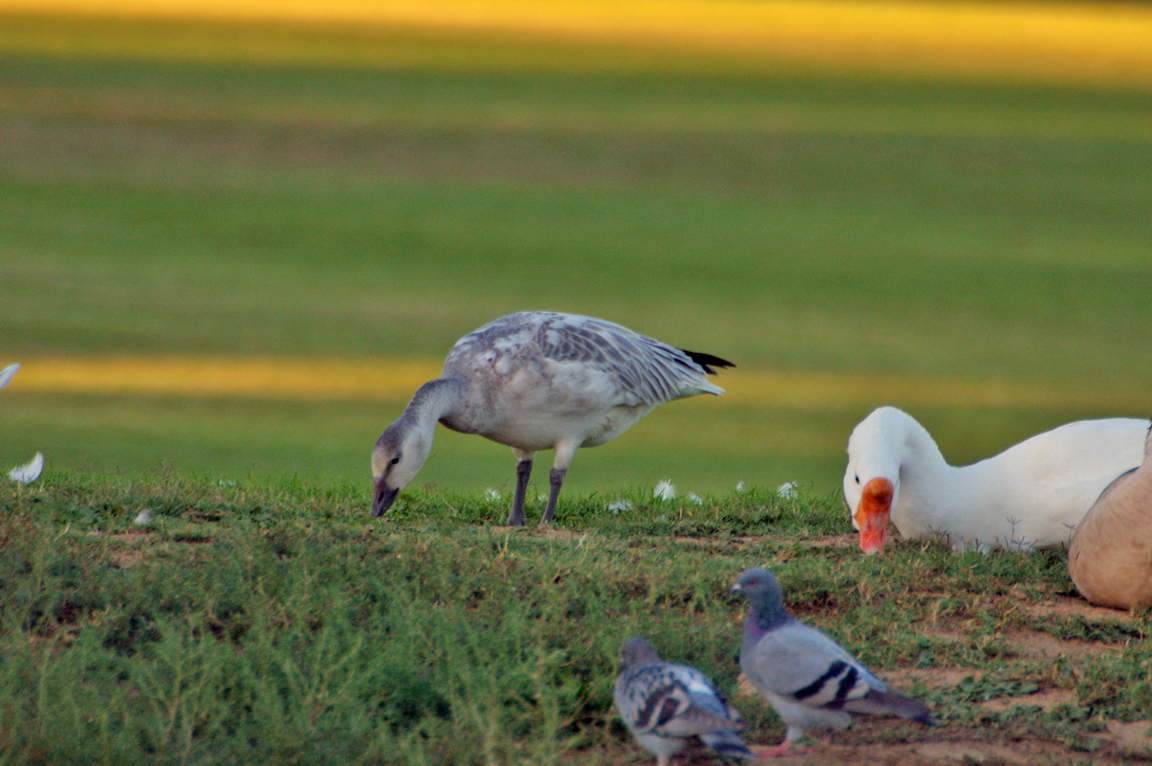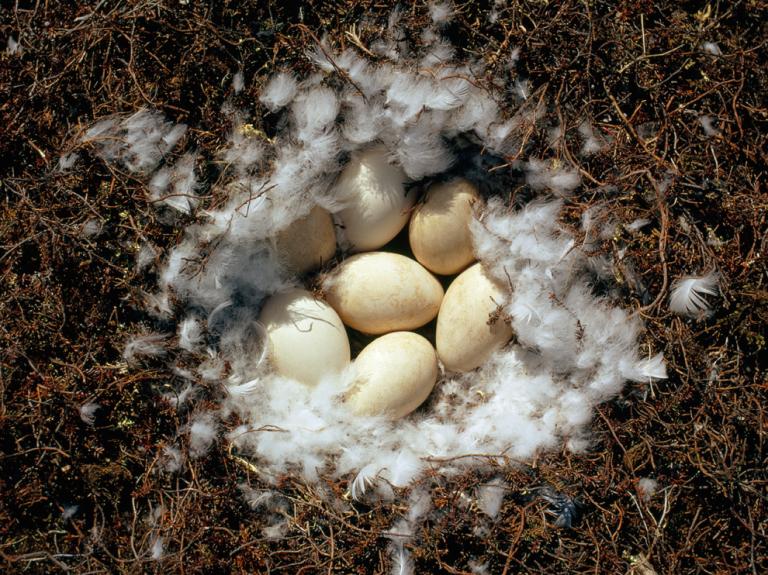|
|
|
 |
Snow Goose
|
| Chen caerulescens | |
A medium-sized goose that breeds on the arctic tundra, the Snow Goose travels south in very large, high-flying, noisy flocks. The swirling white of a descending flock suggests snow, but among the white birds are darker individuals. Until recently, the Blue Geese, as the dark birds were called, were considered a separate species. They are now recognized as merely a dark form (or "morph") of the Snow Goose.
Interesting Information
-
Snow Goose hunting in the eastern United States was stopped in 1916 because of low population levels. Hunting was allowed again in 1975 after populations had increased. Populations have been growing so large that the geese are destroying nesting habitat. Hunting has not slowed the dramatic increases in population size.
-
One nest was found to be attended by two female Snow Geese, but no male. Each female had been inseminated by a different male and both incubated the eggs.
-
The dark color of the blue morph Snow Goose is controlled by a single gene, with dark being partially dominant over white. If a pure dark goose mates with a white goose, the offspring will all be dark (possibly with white bellies). If two white geese mate, they have only white offspring. If two dark geese mate, they will have mostly dark offspring, but might have a few white ones too.
-
Parents stay with their young through the first winter. Families travel together on both the southbound and northbound migrations, separating only after they return to the arctic breeding grounds. Family groups can easily be seen in migrating and wintering flocks.
-
During migration the Snow Goose flies so high it can barely be seen. They form shifting curved lines and arcs as they fly.
-
Hunters call these birds "Wavies." The name in derived from the Chippewa name for this bird, wewe.
-
During the summer their heads' are often stained red as a result of gathering food in mud containing iron oxides.
-
A group of geese has many collective nouns, including a "blizzard", "chevron", "knot", "plump", and "string" of geese.
Description
Adult Description
-
Medium-sized goose.
-
Black patch on bill edges, the "grinning patch" or "smile."
-
Two color forms.
-
White morph: White all over, except for black primaries.
-
Blue morph: White head and front of neck, body dark gray-brown.
-
Complete range of intermediate forms occur.
-
Length Range: 64-79 cm (25-31 in)
-
Weight: 2299 g (81.13 oz)
-
Size: Large (16 - 32 in)
-
Color Primary: White
-
Underparts: White
-
Upperparts: White
-
Back Pattern: Barred or banded, Solid
-
Belly Pattern: Barred or banded, Solid
-
Breast Pattern: Solid
Sex Differences
Sexes similar.
Immature
White morph: Gray above, darker on head and neck. White below. Legs, feet, and bill gray, turning pink. Blue morph: Entirely dark gray-brown. Belly paler to white. White under tail. Wing linings pale gray, contrast with dark body and black primaries in flight.
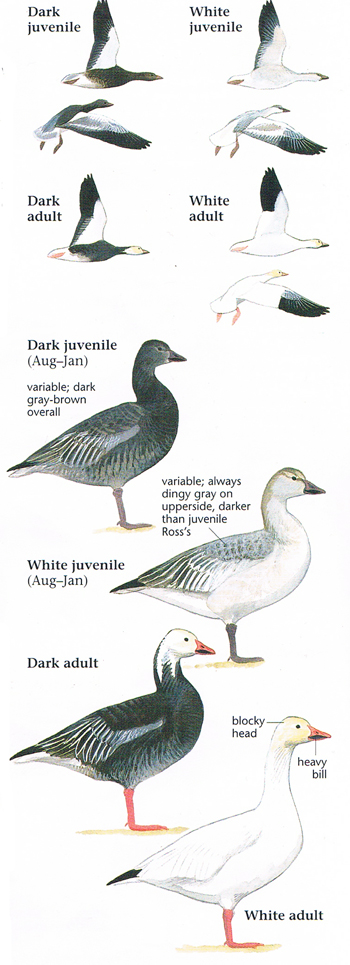
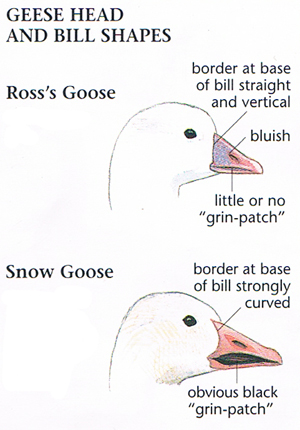
Photo taken from: The Sibley Field Guide by David Allen Sibley
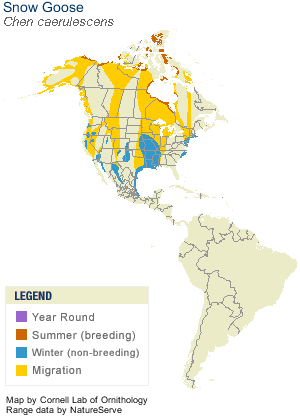
© 2003 Cornell Lab of Ornithology
|
Habitat |
|
|
Behavior |
|
Courtship displays and pairing take place in spring, during a goose's second spring migration. Pairs remain together for life. Feeds in water-logged soil or shallow water. |
|
Food |
|
Entirely vegetarian. Eats variety of plant species and parts, from aquatic plants to grasses and grain. |
Taxonomy
| Kingdom: | Animalia |
| Phylum: | Chordata |
| Subphylum: | Vertebrata |
| Class: | Aves |
| Order: | Anseriformes |
| Family: | Anatidae |
| Subfamily: | Anserinae |
| Genus: | Chen |
| Species: | Chen caerulescens |
| Subspecies: | Chen caerulescens atlantica |
| Chen caerulescens caerulescens |
Similar Species |
Ross's Goose smaller, has much smaller triangular bill without grin patch, has warty green base to bill, and a straight, not curved base of bill on side of face. |
|
Bird Sound |
|
Noisy. Call a loud nasal "whouk." Calls at any hour, in any season, from any location. |
|
Eggs look like this |
|
Photo taken from: ARCTOS Collaborative Collection Management Solution |
Videos
Snow Goose 1
Up close and personal on land
Snow Goose 2
Swimming
